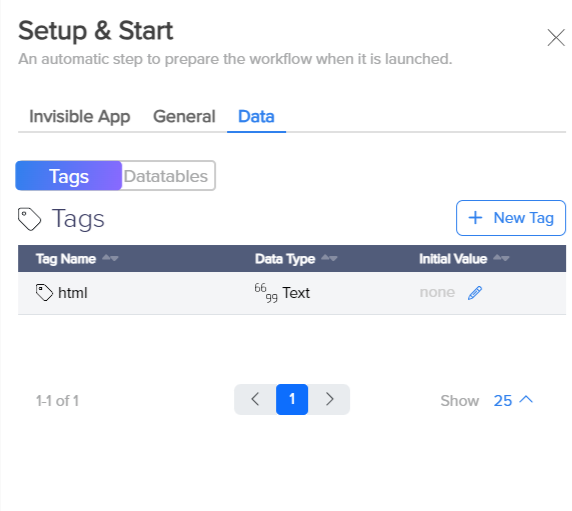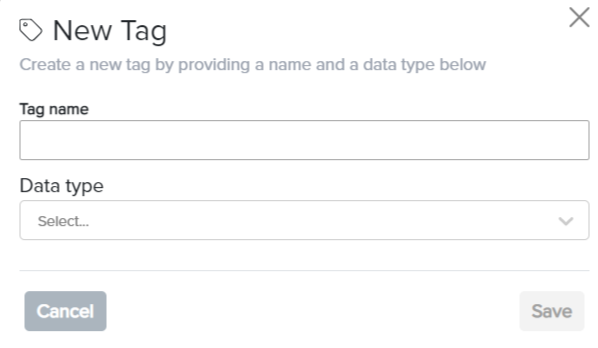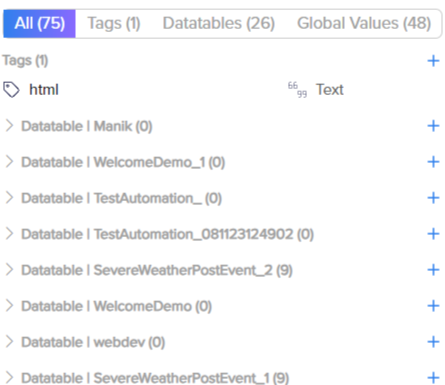- Print
- DarkLight
- PDF
Tags are essentially containers that hold pieces of data, through which the actual data can be referenced. A tag, when created for the first time, also has a data type associated with it. The 'data-type' of the variable defines what kind of data it can hold.
For example, there can be a variable of type 'text' which can hold textual information comprising alphanumeric characters including any symbols etc. A variable of type 'numeric' can hold only numeric characters 0 through 9.
A tag stores data within the workflow and can be accessed from within the workflow they are defined in. Canvas enables you to manage your tags, and also add them during building a workflow without having to navigate to a different page to do so.
Creating a New Tag
To create a new tag, go to Canvas > Click Setup & Start > Navigate to Data Tab > Tags.

Alternately create a new tag on the go, drag-drop the form elements and click to expand and select Save Output and select New Tag. Create a tag with the data type and click Save .

Referencing a Tag
To reference any of the pre-created tags, use {{ to view a display of all the available tags as shown in the image below. Click to reference the required tag.

Tag Functions
Tag Functions enhance the extraction of additional information from tags based on their data type, allowing the user to perform complex actions with tag values. These functions are available only for the below-mentioned data types:
Data Type | Tag Function | Description |
|---|---|---|
Date | getMonth | Retrieves the month number from the stored date in the tag. |
getDay | Retrieves the day number from the date stored in the tag. | |
getYear | Retrieves the year from the date stored in the tag. | |
getDayOfWeek | Retrieves the number representing the day of the week. | |
List | getLength | Retrieves the number of entries in the list. |
getItem(n) | Retrieves the entry at position n from the list. | |
JSON | getLength | Retrieves the length in characters of the JSON body. |
.child | Retrieves the child element within the JSON structure. | |
[index] | Retrieves the value associated with the specified key. | |
Asset | getBase64 | Retrieves the file content as base64 encoded. |
getName | Retrieves the file name of the asset. | |
getSize | Retrieves the file size of the asset. | |
getContentType | Retrieves the content type of the asset. | |
getUploadTime | Retrieves the upload time of the asset. | |
getExtension | Retrieves the file extension of the asset. |
Inserting a Tag Function
Click the referenced tag to display the list of available functions.
Select the applicable functions to add them to the tag.
.png)
In JSON data type, .child and [index] tag functions allow user input. Place the cursor after the period to enter the appropriate value.
.png)

.png)
.png)